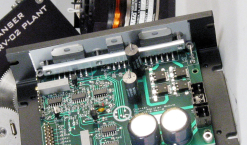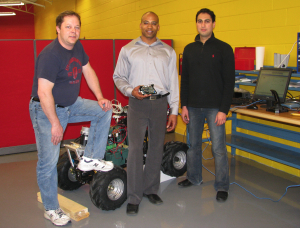
Road Warrior
By André Voshart
Automation Motion Control DefenseQuanser's unmanned ground vehicle could save lives in combat zones using haptics

The Government of Canada recently invested more than $35 million for 24 new research projects to enhance Canadian security, and chief among them is a grant to Markham, Ont.-based Quanser Consulting Inc., which will lead the development of a more advanced remote-controlled robotic device capable of disarming explosive devices.
Crude bombs known as IEDs (improvised explosive devices), a fact of life in today’s “war on terror,” have forced the Canadian military in Afghanistan and beyond to explore new ways to cope. Close to home, one Canadian company has been tasked to create new technology that will allow soldiers to detect, manipulate and eliminate them—all from the safety of their convoys thousands of yards away.
Quanser, a company specializing in state-of-the-art robotics and control systems, in the past year has received assistance from the National Research Council Canada Industrial Research Assistance Program (NRC-IRAP) to create a prototype for a high-speed unmanned ground vehicle (UGV). Representing a new pinnacle in remote-control systems, it will give military convoys a sensory edge as they make their way across unexplored territory.

“The ultimate intent is to be able to drive an unmanned ground vehicle, and with a controller remotely, be able to get some sort of sensation,” says Quanser CEO Paul Gilbert. “The theory and concept is that if you can feel the bumps in the road and so on you’ll be able to drive the vehicle quicker.” The UGV will incorporate the company’s own haptic innovations, which deal with the sense of touch for controlling virtual objects with vibro-tactile and force feedback.
In all, the user would have a steering device at their ground station, some form of visual communication, and sensory feedback—but exactly how it’s delivered is under wraps.
“The device that we’re developing, I can’t talk too much about that because we’re planning to patent that design, but suffice it to say it’s a novel advanced-joystick kind of arrangement,” Gilbert says carefully. “It has throttling capabilities and directional capabilities so you can turn left and right and accelerate and decelerate, but the object is that user will get some pretty good feedback from the vehicle.
